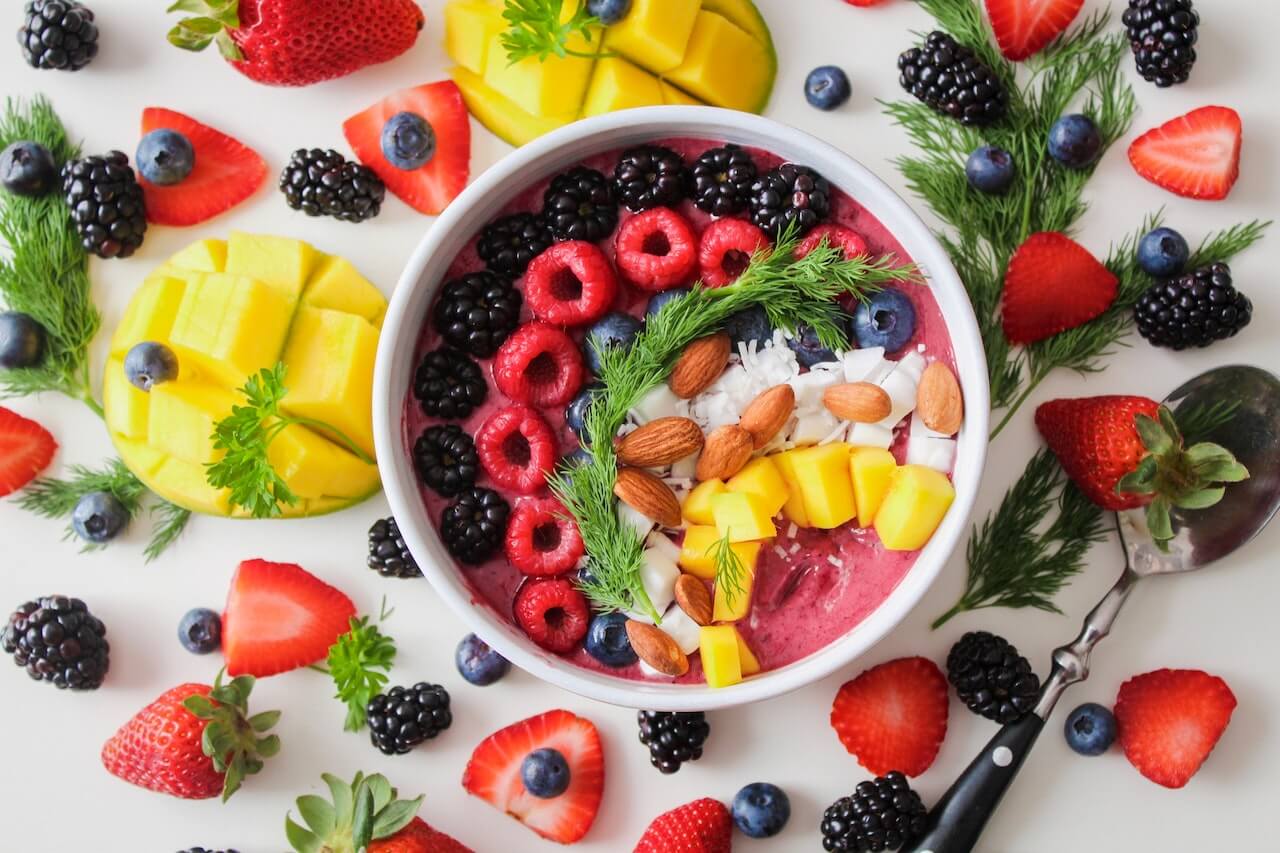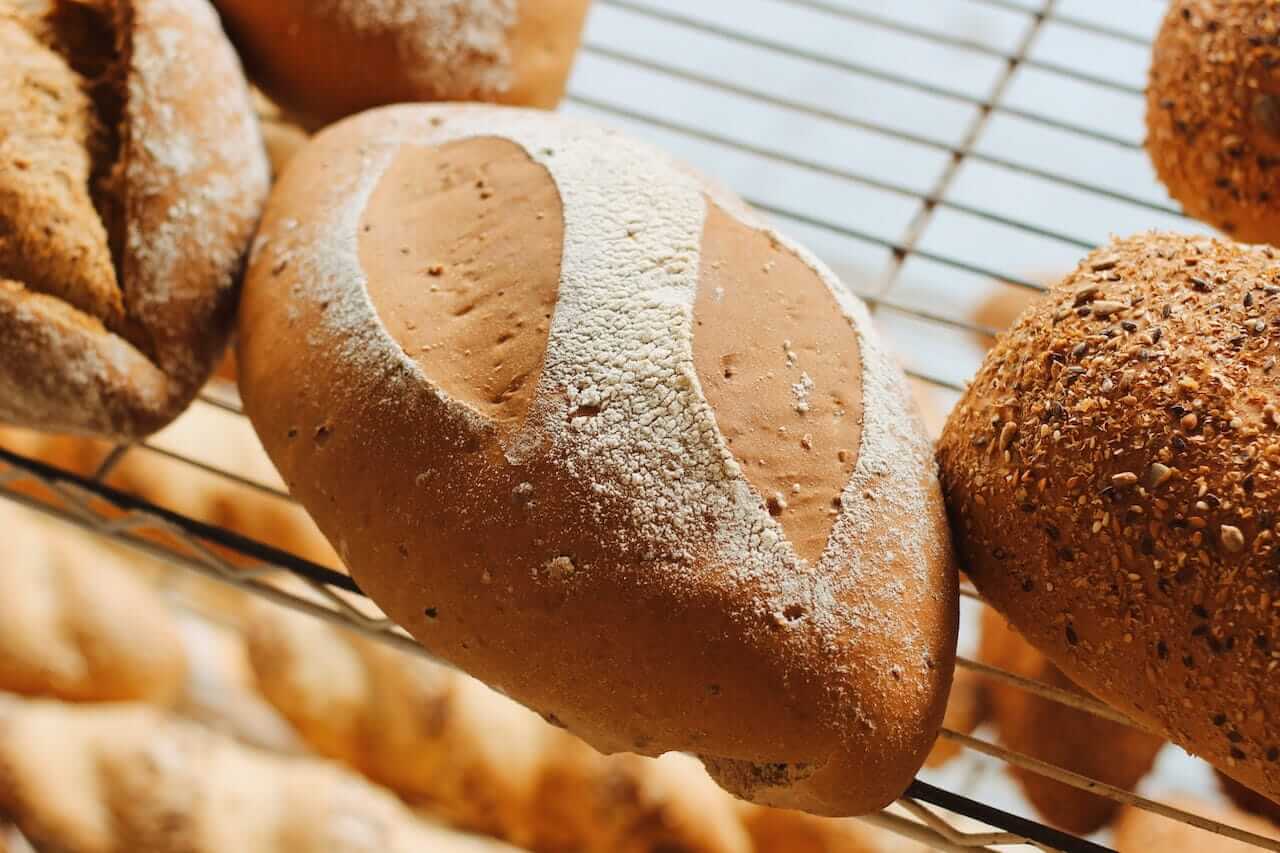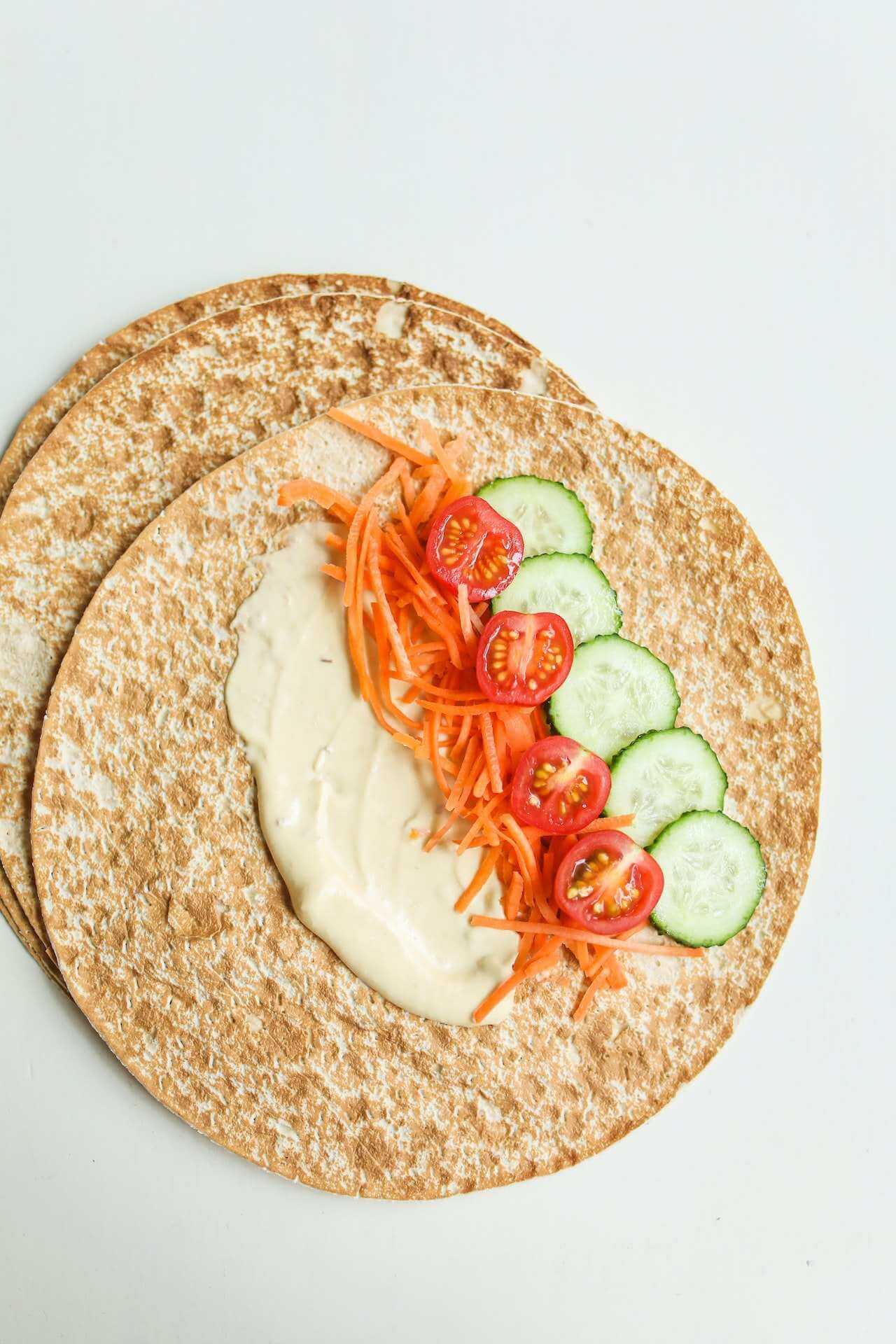Flour is a basic pantry staple used in cookies, cakes, muffins, bread, biscuits, and thickening sauces. Due to its common use, many look for different flours to boost the nutrient content of their foods.
You may be surprised to know that some flours are healthier than your typical white or all-purpose flour. For example, refined white flour removes the nutrient-packed bran and germ, which contains vitamins, minerals, protein, and fiber. Due to the lower nutritional value of white flour, this pantry staple is being replaced with a healthier alternative flour.
Does Flour Affect Blood Sugar Levels?
Refined white flour or all-purpose flour is processed extensively: scrubbing the protein, fiber, and vitamins off the grain's outer layer, which primarily leaves carbohydrates and fat behind. The loss of fiber and protein causes white flour to be absorbed quickly and raises glucose levels quicker.
Fiber and protein are essential for many people looking to prevent or manage health conditions effectively. In people living with diabetes, a first-line recommendation from health professionals is to replace refined white flour with whole-grain and less-processed products for improved glycemic control and a lower cardiovascular disease risk.1
The below flours are refined, high in carbohydrates, and low in fiber and protein. This nutritional combination can spike blood sugar levels with a subsequent blood sugar crash. Using these flours less (or substituting part of the amount for a healthier type) can help control your levels.
- All-Purpose Flour
- Corn Flour
- Millet Flour
- White or Brown Rice Flour
- Pastry Flour
- Cake Flour
{{mid-cta}}
Is Flour Good for Weight-Loss?
The human body needs a certain amount of carbohydrates to function properly, and flour can certainly satisfy this daily need. Ideally, choose carbohydrate-rich foods that are higher in fiber and protein, and contain vitamins and minerals. Empty carbs (carbohydrates devoid of significant other nutrients) should be limited. Incorporating carbs with healthy fats helps keep you full and prevents mindless snacking.
The same concept applies to your flour choice. A diet with abundant refined grains will lead to weight gain and an increased risk of type 2 diabetes.2 Stick to whole grain or higher protein and fiber flours to help lose weight.
Flours that are good for weight loss include:
- Almond Flour
- Oat Flour
- Coconut Flour
- Chickpea Flour
- Whole Wheat Flour
- Quinoa Flour
- Sourdough Starters
7 Healthy Flour Options
Almond Flour
Almond flour is made from finely ground almonds, making it a gluten-free alternative. It has a slightly grainy texture and nutty flavor.
Almond flour contains almost double the protein and almost four times the fiber content of white flour.3 Additionally, the healthy fat content from almonds helps glucose stability and helps you stay full for longer. Almond flour is also the lowest carbohydrate flour available.3
Almond flour can be used in various recipes, including crusts, muffins, bread, pancakes, waffles, and breading. Usually, about 50 percent of the white flour can be substituted with almond flour with no noticeable favor changes to the final product.
However, when substituting entirely with almond flour, you will notice a denser product. Gluten helps baked goods rise and accomplish light and fluffy baked products, so a gluten-free alternative will change the texture and visual component.
Oat Flour
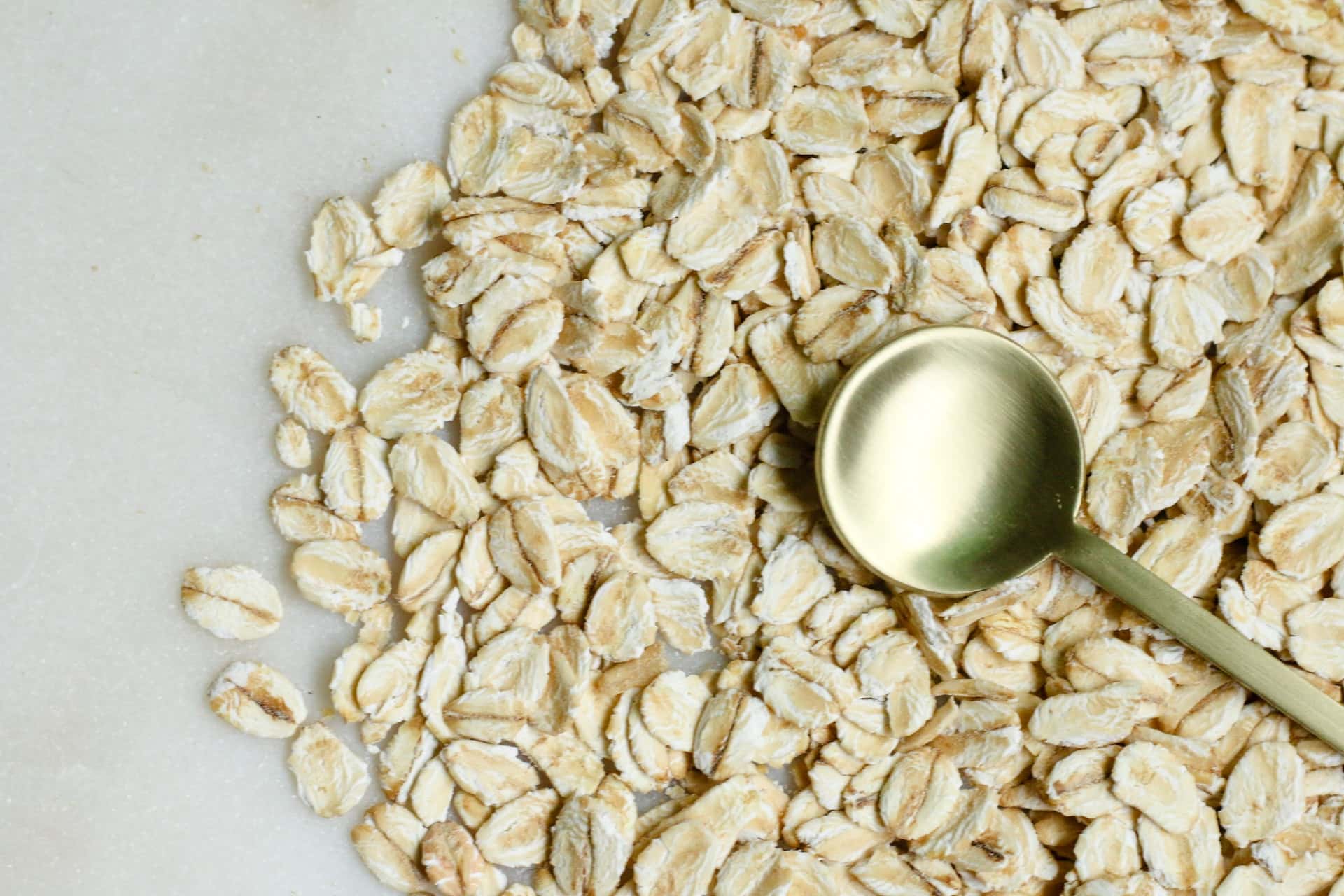
Oat flour is made from whole-grain oats ground into a fine powder. You can buy it pre-ground or grind whole-grain oats in a food processor or grinder. Oat flour can be gluten-free if the oats used are certified gluten-free.
Oat flour is lower in carbs than white flour and is over triple the fiber.4 Oats contain a beneficial fiber called beta-glucan, which is the major active compound that lowers cholesterol and has antidiabetic effects.5 Research shows that consuming oats improves gut bacteria and helps prevent heart disease, dermatitis, and some cancers.11
Oat flour has a mild flavor. You can substitute 25 percent of the white flour of any recipe with no altered final products. You will need more oat flour when substituting the whole amount (for example, 1 1/3 cup oat flour will replace 1 cup white flour).
Coconut Flour
Coconut flour is another gluten-free alternative made by grinding dried coconut into a powder. It does have a sweeter flavor and coconut scent, so many avoid using it in recipes where a coconut flavor would not blend well.
Coconut flour is ten times higher in fiber than white flour! Coconut flour is also high in protein and lower in carbs.6 The moderate fat content will help with fullness and weight loss.
Baking with coconut flour is trickier than other flour alternatives. Coconut flour does not absorb liquid or bind with eggs well. You can substitute up to 25 percent of the white flour with coconut flour before the final product becomes dense and heavy. Find recipes initially created for coconut flour for best results.
Chickpea flour
Chickpea flour is made from dried, cooked garbanzo beans ground into a powder.
This neutral-flavored, gluten-free flour is high in protein, double the fiber of white flour, and lower in carbohydrates.7 Research also indicates that higher consumption of lentils, legumes, and beans helps prevent cancer and cardiovascular disease.8
Chickpea flour can be used in recipes that need to bind together, like fritters, meatloaf, or burgers. It can also be utilized as a thickener for sauces, soups, and in batters like pancakes and waffles. You can mix it with other flour to make bread and muffins.
Whole wheat flour
Whole wheat flour is the only gluten-containing flour on the list. Whole wheat flour is the healthier version of white flour and is easy to use for novice bakers.
Whole wheat flour is not refined, contains essential vitamins and minerals, and is over four times higher in fiber than white flour.9 Replacing white flour with whole wheat flour helps with glycemic control and reduces the risk of cardiovascular disease.1
Since whole wheat flour contains gluten, it will rise similarly to white flour. Whole wheat flour is not refined, so allowing the batter to rest and absorb more liquids before baking will lead to tender products.
You will need less wheat flour when compared to white flour recipes (for example, ¾ cup of whole wheat flour for 1 cup of white flour). Substituting 50 percent of the white flour for whole wheat flour works well in most recipes.
Quinoa Flour
Quinoa flour is made by grinding quinoa seeds into a powder. It is gluten-free and provides a lower carb, higher fiber, and protein flour full of vitamins and minerals.10
Some people report a bitter flavor from quinoa flour. To remedy this, you can toast quinoa flour before using it to remove the bitter flavor. If you like the taste as is, you could try baking a small batch recipe straight from the bag and save this step.
Quinoa flour works well in baking as a substitute for white flour. You can easily swap out half of the white flour for quinoa flour in most recipes, and when making cakes or cookies, you can swap the whole amount! Swapping for quinoa flour will boost your whole grain intake and help with weight loss.
Sourdough Starter
This last one is more of a method of using flour for baking. Sourdough is a process where you ferment a flour of choice. This entails mixing equal parts water and flour, allowing it to ferment, and then keeping it active by providing fresh flour at timed intervals.
Research has shown that using a sourdough starter as part of your flour mixture can improve glucose metabolism. The sourdough method (fermentation) alters the carbohydrate molecules, leading to a lower glycemic index and better glucose levels.13
For recipes, you can start by using a ¼ cup of the sourdough starter as part of the amount of flour a recipe calls for.
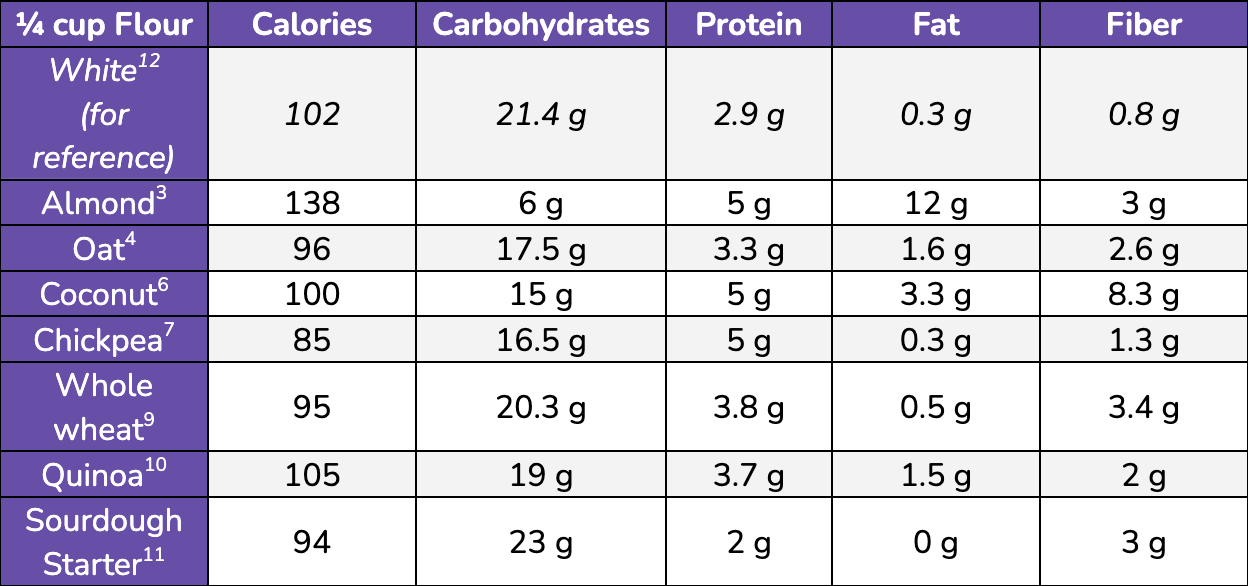
How Much Flour Should You Consume for Weight Loss?
The Dietary Guidelines for Americans recommends consuming 6 ounces of grains daily, at least 3 ounces being whole grain.14 A one-ounce portion is equivalent to a slice of bread or ½ cup of cooked rice, pasta, or cereal.
Ideally, you should vary your sources of grains to consume a variety of nutrients and to allow for different types of cuisine. Limiting or removing your flour intake from refined sources should be the first priority.
Bottomline: Which Alternative Should You Go For?
Each flour alternative has different nutrients and flavors. Start experimenting with a couple of the flours. Choose the flour that fits the type of cooking or dishes you typically make.
Swapping white flour out for these healthy flours will help you balance your nutrients at meals. However, you may be limited by what is available in your area or budget. Almond and oat flour are more economical and widely available.
Learn How to Improve Your Nutrition and Healthy Eating Habits with Signos’ Expert Advice
Adding a Signos’ CGM to your life can improve your health. This easy-to-use tool will spur healthy eating habits, lifestyle changes, and ongoing meal and intake tracking. Signos’ lets you see how specific foods (like flour) influence your glucose level. Take a quick quiz to determine if Signos is a good fit for you.
- Item 1
- Item 2
- item 3
Topics discussed in this article:
References
- https://pubmed.ncbi.nlm.nih.gov/12081851/
- https://pubmed.ncbi.nlm.nih.gov/23608304/
- https://fdc.nal.usda.gov/fdc-app.html#/food-details/1681957/nutrients
- https://fdc.nal.usda.gov/fdc-app.html#/food-details/2261421/nutrients
- https://pubmed.ncbi.nlm.nih.gov/34828872/
- https://fdc.nal.usda.gov/fdc-app.html#/food-details/583168/nutrients
- https://fdc.nal.usda.gov/fdc-app.html#/food-details/475613/nutrients
- https://pubmed.ncbi.nlm.nih.gov/29352655/
- https://nutritiondata.self.com/facts/cereal-grains-and-pasta/5744/2
- https://fdc.nal.usda.gov/fdc-app.html#/food-details/2174441/nutrients
- https://www.recipal.com/ingredients/29617-nutrition-facts-calories-protein-carbs-fat-sourdough-starter-ireks-fertigsauer
- https://nutritiondata.self.com/facts/cereal-grains-and-pasta/5745/2
- https://pubmed.ncbi.nlm.nih.gov/18317680/
- https://www.dietaryguidelines.gov/sites/default/files/2021-03/Dietary_Guidelines_for_Americans-2020-2025.pdf






